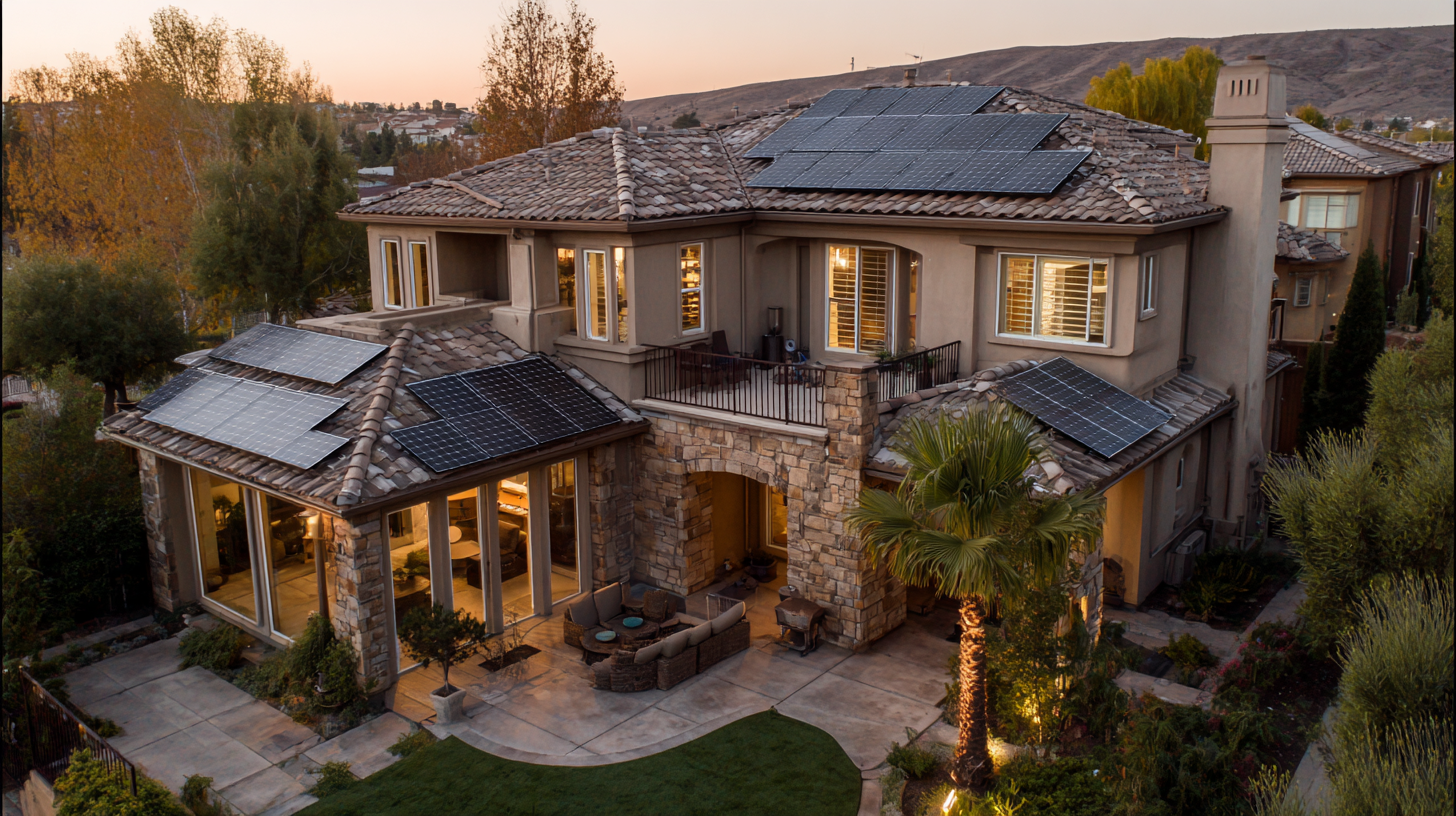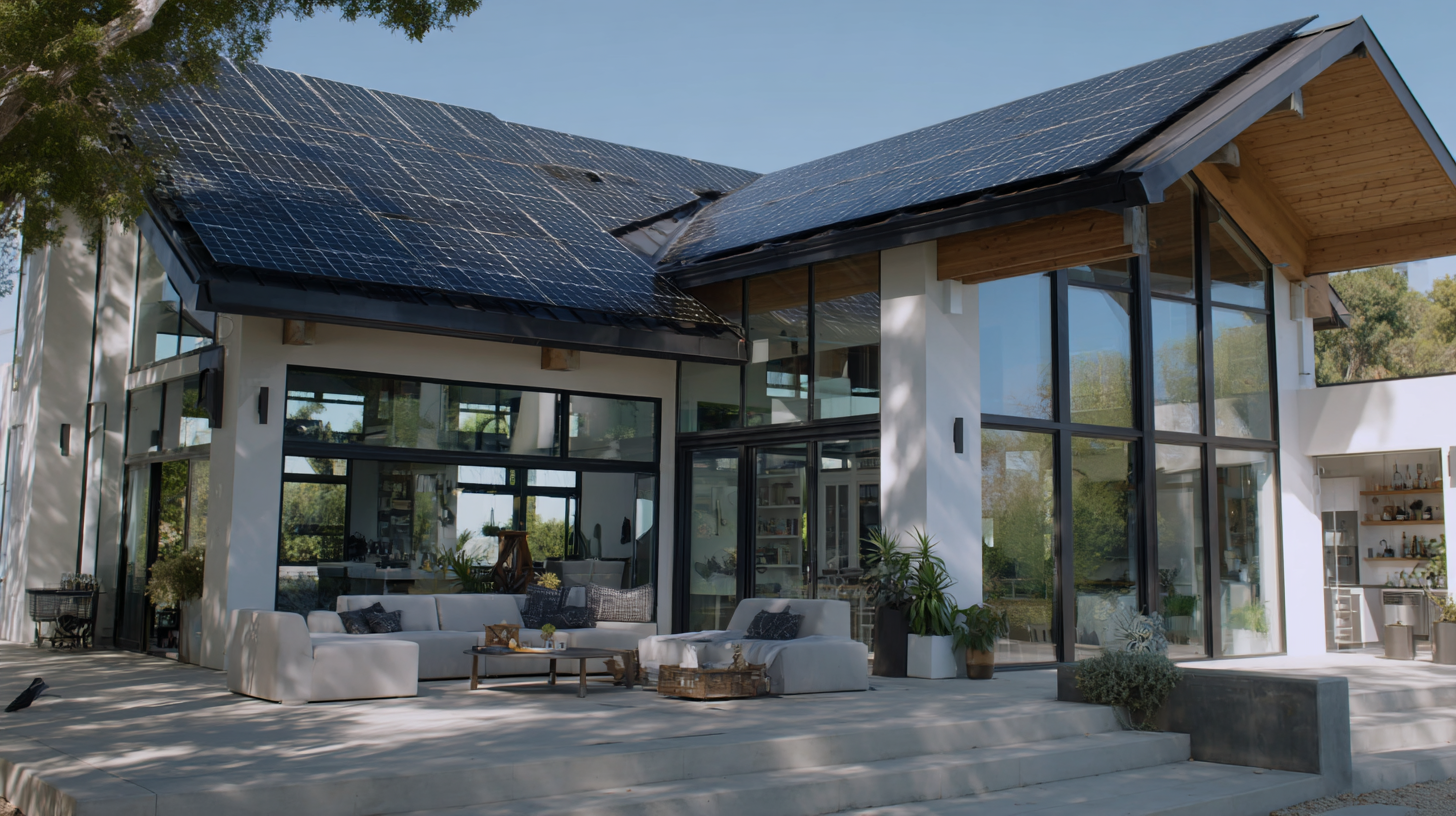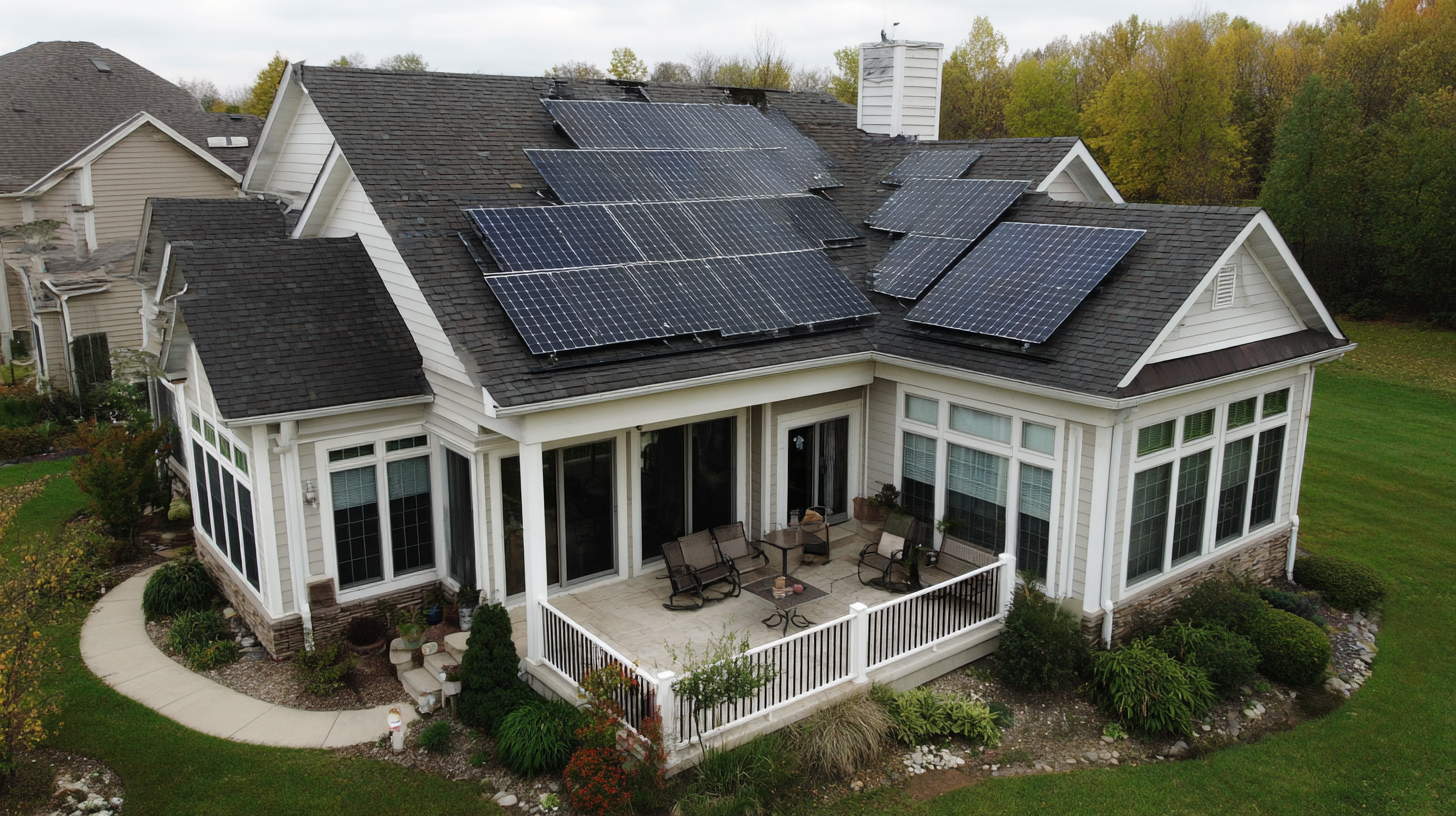The Future of Sustainable Living with the Best Home Solar Panel System
As we look towards 2025, the transition to sustainable living is more critical than ever, especially in the realm of renewable energy. According to a recent report by the International Energy Agency, the global solar market is projected to grow by more than 20% annually, with home solar panel systems playing a pivotal role in this surge.

By 2025, an estimated 70 million homes worldwide are expected to harness solar energy, significantly reducing carbon footprints and energy costs. This shift not only highlights the growing accessibility and affordability of solar technology but also underscores the importance of adopting the best home solar panel system tailored to individual needs.
As we delve into the future of sustainable living, exploring the latest innovations and industry trends will provide valuable insights for homeowners looking to embrace this green revolution.
Emerging Technologies in Solar Energy for Sustainable Living by 2025
As we look towards 2025, the landscape of solar energy is rapidly changing with emerging technologies leading the way for sustainable living. Innovations such as perovskite solar cells and BIPV (Building-Integrated Photovoltaics) are set to revolutionize how we capture and utilize sunlight.
 These technologies promise higher efficiency and greater adaptability, allowing homeowners to integrate solar solutions seamlessly into their living spaces. Imagine solar panels that blend with your roof or windows that generate energy while letting in natural light!
These technologies promise higher efficiency and greater adaptability, allowing homeowners to integrate solar solutions seamlessly into their living spaces. Imagine solar panels that blend with your roof or windows that generate energy while letting in natural light!
Tip: When considering solar solutions for your home, research local incentives and rebates that can significantly reduce your installation costs. Many regions offer financial support for adopting solar technology, making it more accessible.
Moreover, advancements in energy storage, such as the development of more efficient battery systems, will enable homeowners to store excess energy generated during the day for use at night. This capability enhances energy independence and reliability, allowing for a more sustainable lifestyle.
Tip: Consider smart home integration with solar systems. Smart meters and energy management systems can help you monitor your energy usage and optimize the performance of your solar installation, ensuring you make the most of every solar ray.
The Role of Smart Home Integration in Solar Panel Systems
In the quest for sustainable living, the integration of smart home technology with solar panel systems is paving the way for a more efficient and eco-friendly future. Smart home integration allows homeowners to monitor and control their energy consumption in real-time, optimizing the use of solar energy generated by their systems. With intelligent apps and devices, homeowners can adjust settings for appliances and lighting, ensuring that they use energy when production is at its peak, thus reducing reliance on the grid and minimizing waste.
Moreover, the synergy between solar technology and smart home features contributes to enhanced energy management. Smart thermostats, for instance, can learn users’ habits and adjust heating and cooling accordingly, utilizing solar power where possible. Additionally, energy storage solutions like smart batteries can store excess energy generated during sunny days for later use, further increasing efficiency. As smart technology continues to evolve, its role within solar systems will become increasingly vital, making sustainable living more achievable and user-friendly than ever before.
The Future of Sustainable Living with Home Solar Panel Systems
This chart illustrates the potential energy savings from different types of home solar panel systems (Monocrystalline, Polycrystalline, and Thin Film) when integrated with smart home solutions over a 5-year period. The data shows the average annual energy savings (in kWh) achieved through effective energy management and usage monitoring.
Cost-Effectiveness and Financial Incentives for Home Solar Installations
The rising demand for sustainable living has made home solar panel systems a focal point for energy-conscious homeowners. In 2023, the U.S. solar market was projected to grow by 40% year-over-year, largely driven by increasing cost-effectiveness and attractive financial incentives. According to the Solar Energy Industries Association, the average cost of solar power has decreased by about 70% over the last decade, making it more accessible than ever for homeowners looking to reduce their energy bills.
Financial incentives play a crucial role in the adoption of solar technology. Currently, homeowners can benefit from a federal solar tax credit that offers a deduction of up to 26% of the installation cost from federal taxes. Moreover, various states provide additional rebates and incentives that can further offset expenses, making the total cost of ownership significantly lower. It's estimated that solar panel installations can yield savings upwards of $20,000 over 20 years, depending on energy consumption patterns and local electricity rates.
Tips for maximizing benefits include shopping around for qualified contractors to ensure competitive pricing and looking into local utility incentives. Additionally, monitor your energy usage to better size your system and make the most of your investment. Engaging with community solar programs can also provide an alternative for those unable to install panels directly on their roofs, further enhancing accessibility to this sustainable energy source.
Environmental Impact: How Solar Panels Contribute to a Greener Future
As we continue to navigate the challenges of climate change, solar panels have emerged as a pivotal technology in advancing a greener future. Their capacity to harness the sun's energy not only reduces dependency on fossil fuels but also significantly lowers greenhouse gas emissions. The adoption of solar photovoltaic systems represents a step towards a clean energy transition, making homes less reliant on conventional energy sources. Recent reviews have highlighted the environmental impacts of these systems, showcasing both their benefits and the need for responsible innovation in installation and production.
Innovations in solar technology are paving the way for a sustainable living model. For instance, advancements in solar panel recycling demonstrate the commitment to minimizing waste and maximizing resource efficiency. This progress aligns with global efforts to create a circular economy, where sustainability is interwoven into every aspect of energy usage. Countries leading in renewable energy are already experiencing transformative effects, with solar power at the forefront. This growing trend towards sustainability not only furthers the environmental agenda but also empowers communities with cleaner and safer energy alternatives for the future.
The Future of Sustainable Living with the Best Home Solar Panel System
| Dimension | Data |
|---|---|
| Average Solar Panel Efficiency | 18% - 22% |
| Average Cost per Watt | $2.50 - $3.50 |
| Carbon Footprint Reduction | 0.5 to 4 tons annually |
| Average Payback Period | 5 to 7 years |
| Increase in Home Value | $15,000 on average |
| Job Creation in Solar Industry | 250,000+ jobs in the US |
Innovative Storage Solutions: Maximizing Solar Energy Usage in Homes by 2025
As we approach 2025, the landscape of sustainable living is evolving rapidly, particularly in the realm of home energy solutions. Innovative storage technologies are at the forefront, enabling homeowners to maximize the efficiency of their solar energy systems. According to a report by the International Renewable Energy Agency (IRENA), energy storage capacity is expected to increase by nearly 900% globally by 2030, driven predominantly by advancements in battery technologies. These storage solutions not only store excess energy generated during sunny days but also provide a steady energy supply during periods of low solar generation, thus enhancing energy resilience in homes.

Homeowners are increasingly investing in smart energy management systems that can optimize the use of stored energy. A study from the National Renewable Energy Laboratory (NREL) reveals that integrating smart technology with solar energy storage can lead to a 20-30% increase in energy savings. These systems allow homeowners to monitor their energy consumption in real-time, making it easier to shift usage patterns and prioritize the use of solar energy, thus reducing reliance on traditional grid power. As battery costs continue to drop, projected to be as low as $100 per kilowatt-hour by 2025, the adoption of these cutting-edge storage solutions will be crucial for achieving a sustainable energy future.